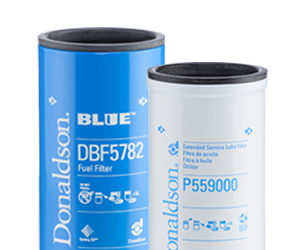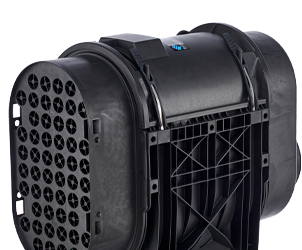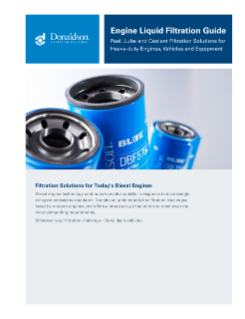Overview
Our Innovative Lube Filter Media Range Lets OEMs Choose Efficiency, Effectiveness, and Everywhere In Between
Donaldson revolutionized the engine lube market with the introduction of fully synthetic lube filter media in the early 1980s. Since then, our engineers have continued to develop media technology that exceeds application fluid cleanliness and service-life expectations. So it’s no wonder that our synthetic media is the go-to choice for extended life and/or enhanced engine protection needs.
We strive to provide OEMs with options, so Donaldson offers a variety of lube filter media available to meet the most stringent engine lube system requirements – including Synteq™ synthetic media and cellulose media. And we don’t stop there; new lube media types are under constant evaluation in our internal laboratories and in controlled field testing. So, if you have a specific application requirement, please contact us directly for information about additional media options to meet your application needs.
Features
Synteq™ Synthetic Media

Donaldson fully synthetic lube filter media is constructed of layered, micro-fiberglass synthetic fibers. It provides enhanced durability for extended drain intervals, plus delivers improved efficiency and capacity. Synteq media also delivers lower restrictions to provide better oil flow, ensuring component protection over a larger range of engine conditions.
Donaldson lube filters with Synteq media can help reduce oil consumption, increase engine protection and reduce operating costs. They provide the optimal balance of efficiency, capacity, and restriction, and remove more than 90 percent of contaminants that are 10 microns or larger, compared to 50 percent or less for typical cellulose filters. At the same time, they deliver nearly double the contaminant carrying capacity of standard cellulose filters.
To provide OEMs with a range of efficiency alternatives, we offer multiple Synteq grades for use in engine lube filtration applications. By balancing efficiency with restriction, we can meet the optimal requirements for each application.
Synthetic Blend – Cellulose & Synteq™ Synthetic Media

This media is a blend of cellulose and synthetic media technologies. It utilizes the best attributes of both media fiber types to achieve an improved cost to performance ratio for more demanding applications than a cellulose-only media can achieve.
This media provides the consistency of layered synthetic fibers to capture coarse contaminants coupled with the affordability of cellulose to deliver an efficient and effective performance alternative to traditional cellulose media.
Cellulose Media

Traditional lube filter media is a cellulose-based material. Cellulose media effectively handles an application’s efficiency and capacity requirements while maintaining cost-effectiveness. As oil flows through the media, large contaminants are captured on the surface of the filter while smaller contaminants become embedded in the underlying media layer, extending the life of the filter.
Many common grades of cellulose media now incorporate some synthetic fibers (see above). This combination can offer additional contaminant holding capacity and media strength and allows cellulose media to be used in longer service interval applications.
Articles
Resources






